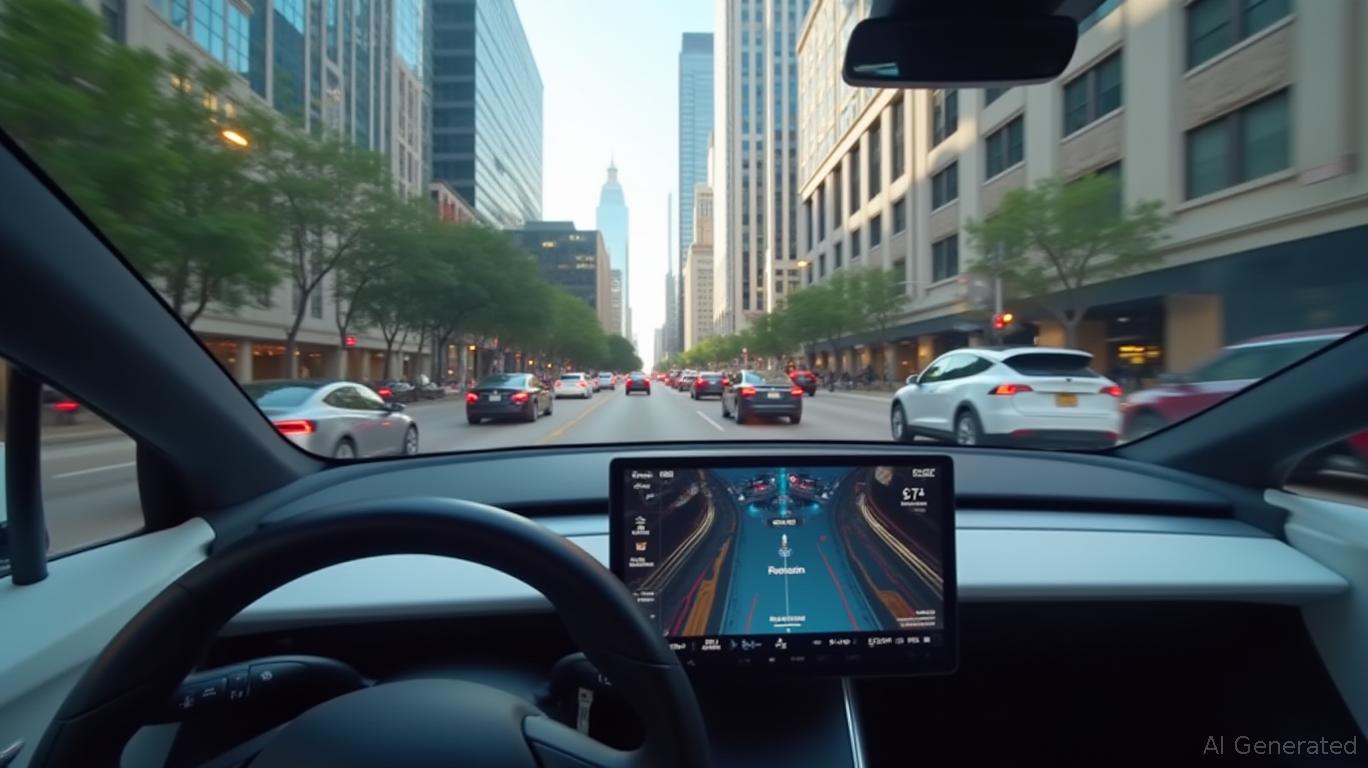Tesla's Turnaround: Can Musk's Exit and Autonomous Vision Stabilize Its Valuation?
Elon Musk's departure from his controversial role as the guiding force behind the Department of Government Efficiency (DOGE) marks a pivotal moment for
. With reduced political entanglements and renewed focus on core operations, the company is positioning itself for a comeback—driven by its autonomous robotaxi launch and shareholder-driven governance reforms. Yet, lingering risks, including plummeting sales and legal battles, demand scrutiny. Here's why investors should reassess Tesla's trajectory now.Musk's Exit: A Strategic Realignment
Musk's exit from DOGE on June 12, 2025, ends a high-risk experiment that drew lawsuits, public backlash, and operational chaos. While critics argue his political involvement distracted him from Tesla's needs, his return to the company's helm could stabilize investor confidence. The departure removes a key liability: lawsuits challenging DOGE's legality threaten to drain resources and distract leadership.
The stock's 13% year-to-date decline (as of May 2025) reflects market skepticism over Musk's dual roles. However, the post-DOGE period could allow Tesla to refocus on its core mission. Musk's recent comments—“I think I've done enough” politically—signal a shift toward prioritizing innovation and execution.
The Autonomous Revolution: A Catalyst for Growth
Tesla's June 12 robotaxi launch in Austin, Texas, is a defining moment. The service, powered by its FSD Unsupervised software, aims to deploy 10 test vehicles initially, with plans to expand to thousands. This marks a critical step toward monetizing its autonomous technology, a cornerstone of its $1 trillion valuation.

Analysts estimate the autonomous ride-hailing market could generate $1 trillion annually. Tesla's early-mover advantage—if it can scale safely and legally—is a rare growth lever in a slowing EV market. Musk's vision for a “$1 trillion opportunity” hinges on proving FSD's reliability, which could justify Tesla's premium valuation.
Governance Reforms: A Path to Accountability
Shareholders are demanding accountability. A coalition representing 7.9 million Tesla shares has called for Musk to dedicate at least 40 hours weekly to Tesla, citing declining sales and profit collapses. Meanwhile, Tesla's revised bylaws—requiring 3% equity ownership to sue—aim to deter frivolous litigation but risk perceptions of board overreach.
The push for governance reforms reflects a broader demand for independent leadership. Musk's $56 billion compensation package, blocked by a Delaware court, underscores the need for checks on his influence. While the board's lack of independence remains a concern, the shareholder pressure signals a turning point: Tesla's future may now depend on institutional oversight, not just Musk's vision.
Risks Looming: Sales Slump and Legal Battles
Despite these positives, Tesla faces steep challenges. Its European sales plummeted 49% in April 2025, with Chinese sales down 10,000 units year-over-year. Competitors like BYD and SAIC are outpacing Tesla with cheaper models, while Musk's polarizing politics have fueled boycotts in key markets.
Legal risks persist too. Over 30 lawsuits challenge DOGE's actions, including claims that Musk used it to shield Tesla from $2.1 billion in liabilities. The SEC's scrutiny of Tesla's crypto accounting—$97 million in losses omitted from Q1 2025 earnings—adds another layer of regulatory risk.
The Bottom Line: A Gamble Worth Taking?
Tesla's stock sits 30% below its all-time high, offering a discounted entry point. The robotaxi launch and Musk's refocus on core operations could catalyze a rebound—if execution aligns with vision.
Investors must weigh the potential upside against the very real risks. The autonomous rollout's success, governance reforms, and sales recovery are non-negotiable. For those willing to bet on Musk's ability to pivot from politics to product, Tesla's shares—currently priced at a 5-year low—present a compelling opportunity.
The question remains: Can Tesla transform its autonomous ambitions into tangible value, or will its governance gaps and market share losses outweigh the gains? The next few quarters will answer it. For now, the risk-reward calculus tilts cautiously toward action—buy the dip, but keep an eye on the exit.
The race is on.

Comments
No comments yet